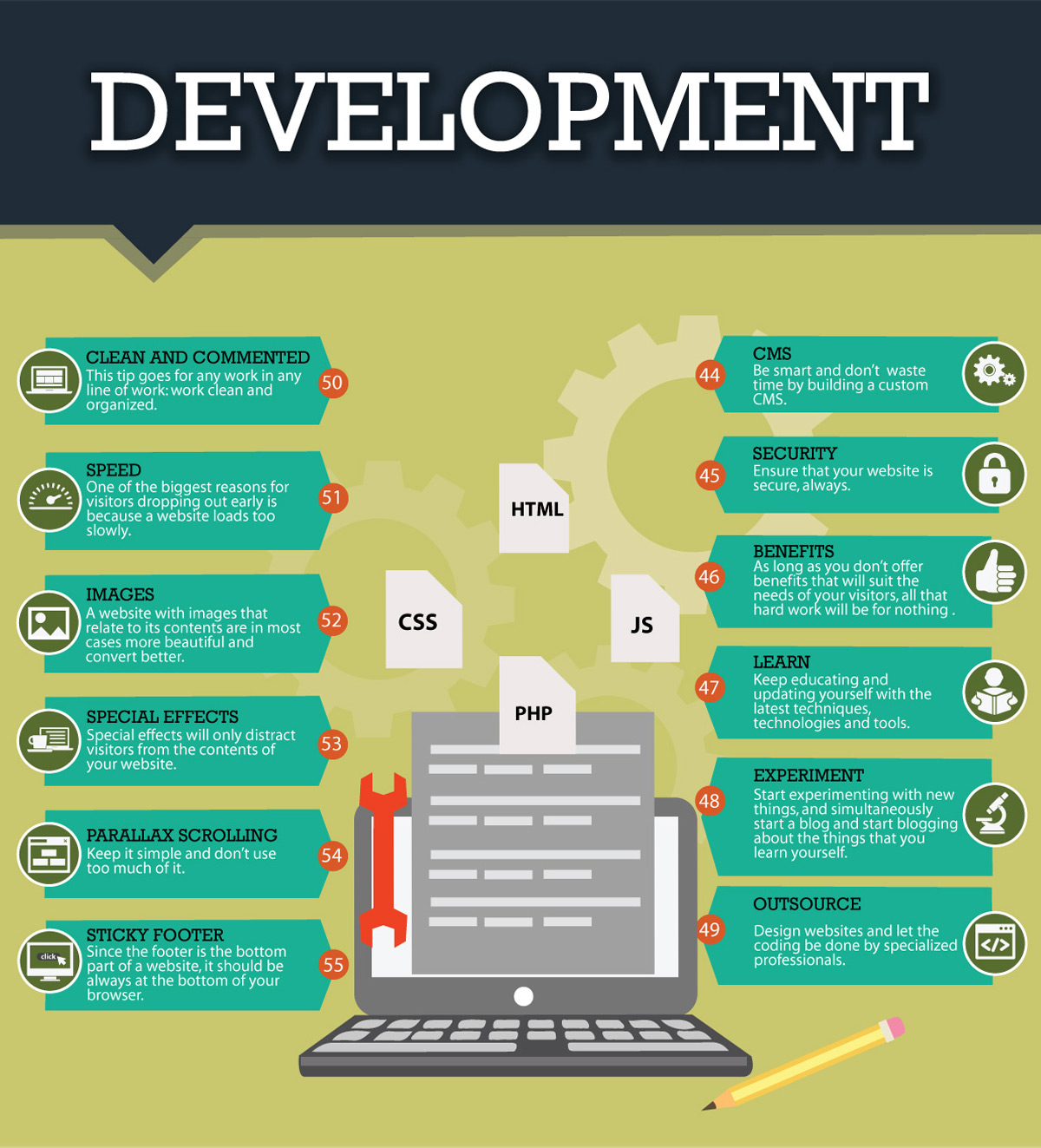The Dos And Donts Of Typography In Website Design
The Dos And Donts Of Typography In Website Design
Blog Article
Staff Writer-Lillelund Rojas
Enhance your website design by choosing easy-to-read fonts and proper sizes. Choose clear sans-serif or serif typefaces for better readability. Stick to 2-3 fonts for consistency. Prevent little dimensions that strain the eyes. Prioritize simplicity over intricacy. These tips will help you produce an aesthetically appealing and engaging site effortlessly.
Do:
* Pick a clear and understandable typeface that is simple to continue reading displays of all dimensions.
* Use headings and subheadings to develop an aesthetic pecking order and help customers navigate your content.
* Use font sizes and line spacing to produce a comfy reading experience.
* Explore various font style styles and weights to add visual rate of interest and emphasis.
* Use typography to draw attention to crucial elements, such as calls to activity or navigating food selections.
Don't:
* Usage too many different font styles or font designs, as this can create aesthetic mess and make your site appearance amateur.
* Use font styles that are also ornate or difficult to read, as they may not present well on all tools.
* Usage typefaces that are too comparable in size or design, as this can make your web content hard to navigate.
* Use way too much message or a lot of words, as this can overwhelm customers and make your website feel chaotic.
* Usage typography in such a way that is irregular with your brand name's general visual identification.
Relevance of Typography in Web Design
Typography plays an important function in website design by improving readability, visual allure, and total individual experience. When used properly, typography can share the tone and message of your web content, making it much easier for users to involve with your internet site. Selecting the best fonts, dimensions, spacing, and colors can significantly influence exactly how site visitors perceive and interact with your site.
The readability of your web site is straight tied to the typography options you make. Choosing legible typefaces and proper typeface dimensions makes sure that customers can quickly take in the information on your pages without stressing their eyes. Furthermore, correct spacing between lines and paragraphs can boost understanding and guide users with the material effortlessly.
Furthermore, typography adds to the visual charm of your website. By creating an unified combination of typefaces and shades, you can develop a natural design that astounds users. Consistent typography across different areas of your site also assists in preserving an expert and sleek appearance, improving the overall individual experience.
Dos of Typography
To improve the readability and visual appeal of your site, make sure that you pick fonts that are very easy to review and properly sized. Select font styles that are clear and clear, such as sans-serif or serif font styles, which are typically utilized for body message. Sans-serif typefaces like Arial or Helvetica work well for electronic screens, supplying a modern and clean appearance. On the other hand, serif font styles like Times New Roman or Georgia can include a touch of style and practice to your website.
Another crucial element to consider is font sizing. Make sure your message is large enough to be read pleasantly without straining the eyes. Choose https://seopackages72738.blogrelation.com/32559759/are-you-prepared-to-check-out-the-most-recent-developments-in-site-hosting-that-begin-with-the-letter-a of a minimum of 16px for body message to ensure readability. Furthermore, use various font style dimensions to develop an aesthetic pecking order on your web site. Headings and subheadings need to be larger and bolder than the body text, guiding the viewers via the material effortlessly.
Donts of Typography
Avoid using an extreme range of typefaces in your website design to preserve uniformity and readability for your target market. When it involves typography, less is frequently a lot more.
Right here are some key 'Do n'ts' to keep in mind:
1. ** Prevent using too many various typefaces **: Limitation yourself to 2-3 typefaces for your entire web site. Using a lot more can make your layout look messy and unprofessional.
2. ** Do not use fonts that are difficult to read **: Fancy or extremely attractive font styles may look appealing, however if they give up readability, they aren't worth it. Stick to fonts that are easy on the eyes.
3. ** Avoid utilizing small font style sizes **: Small message might seem smooth, however if it's too small, it can strain your site visitors' eyes. See to it your message is huge sufficient to read easily on all devices.
Conclusion
So, keep in mind, when it involves typography in website design,
do pick font styles carefully, maintain it easy, and prioritize readability.
But don't go overboard with way too many font styles, sizes, or shades.
After all, the trick to fantastic style is often found in the simpleness of typography.
So, next time you're dealing with a site, remember that often less is a lot more - also when it involves typefaces.
